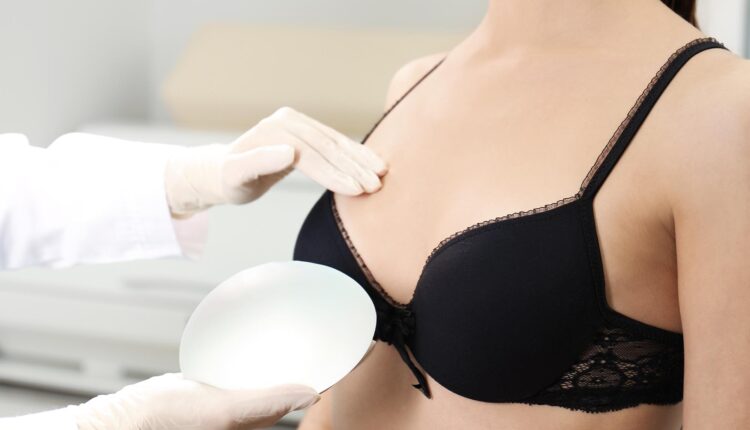Table of Contents
Breast augmentation, frequently achieved through the use of breast implants, has consistently remained one of the top five most popular plastic surgeries performed worldwide. This procedure, which aims to increase the size, change the shape, or modify the texture of the breasts, often provides individuals with increased self-confidence and satisfaction with their body image. However, as with any surgical procedure, it’s essential to fully understand the potential long-term effects that come along with these immediate aesthetic improvements.
Many individuals consider breast implants without giving ample thought to the potential long-term physical and psychological implications. While the immediate results can be transformative, the lasting effects may bring about unforeseen complications or changes to an individual’s health and lifestyle that should be considered with due seriousness.
In light of this, in this post, we’ll explore the long-term effects so you’ll be better equipped to make an informed decision about breast augmentation. Whether you’re considering this procedure or simply wish to understand more about it, we’ll go over the essential insights and considerations regarding the long-term effects of breast implants.
Breast Implants Types and Motivation Behind Them
In a nutshell, breast implants are medical devices utilized to enhance, rebuild, or shape the physical structure of the breasts. The procedure, known as breast augmentation, involves the placement of these implants under the breast tissue or chest muscles.
There are primarily three types of breast implants: silicone, saline, and structured implants. Silicone implants are filled with silicone gel and tend to feel more like natural breast tissue. Saline implants, on the other hand, are filled with sterile salt water and generally provide a uniform shape. The third type, known as structured implants, are filled with sterile saline solution. However, they’re distinctive because they possess an internal structure designed to give the implant a more natural feel.
People choose to get breast implants for various reasons. Some pursue them as part of breast reconstruction after breast cancer surgery or other conditions that affect the breast’s shape and size. Others seek augmentation to enhance their self-image and confidence. It’s important to note that individual motivations are diverse and deeply personal, often rooted in one’s perception of body image and self-esteem.
Short-Term Recovery After Breast Augmentation
After undergoing breast augmentation surgery, the general recovery timeline spans several weeks. Patients may return to normal activities within a few days, though full recovery and final results usually become evident after several weeks or even months. This is when the implants have settled into their natural position and swelling and bruising have completely subsided.
In the immediate aftermath of surgery, patients typically experience soreness, swelling, and bruising. While this is a normal occurrence, potential complications could arise, such as infection, hematoma, changes in nipple or breast sensation, and a poor cosmetic outcome. It’s crucial to closely monitor these symptoms and maintain open communication with your healthcare provider to ensure a smooth recovery.
Long-Term Physical Effects of Breast Implants
Over the long term, physical complications may arise. Implant complications like rupture or capsular contracture, wherein the scar tissue around the implant hardens, are two major concerns. These could require additional surgeries.
The aesthetic appearance of breast implants can also change over time. Weight fluctuations, aging, or pregnancy can alter the breast’s shape, sometimes leading to sagging or asymmetry. Furthermore, implants can impact mammograms and breast cancer detection. They can obscure certain parts of the breast during a mammogram, making detection more challenging.
It’s a common misconception that implants last a lifetime. However, they don’t. Implants at some point need to be replaced or removed, subjecting the individual to additional surgical procedures. For women planning to breastfeed in the future, implants may pose risks. Although many women successfully breastfeed after augmentation, there’s a possibility of reduced milk production or altered sensation.
Long-Term Psychological Effects of Breast Implants
Psychologically, breast implants can boost self-esteem and improve body image for many. However, the importance of having realistic expectations cannot be overstated for long-term satisfaction.
Negative psychological effects can arise when outcomes don’t meet preoperative expectations or when physical complications occur. These can lead to feelings of regret or dissatisfaction, highlighting the need for thorough consultation and understanding before surgery.
Preventive Measures and Regular Checkups
To mitigate these long-term effects, regular postoperative follow-ups are necessary. Screenings like mammograms and MRIs are recommended to monitor the implant’s condition and detect any complications early.
Moreover, self-examination plays a pivotal role in the early detection of problems. Any noticeable changes should be promptly reported to a healthcare provider.
Final Thoughts
Understanding the long-term effects of breast implants is vital to making informed decisions regarding breast augmentation. While implants can boost self-esteem and improve body image, they come with potential physical and psychological long-term effects. Preventive measures and regular checkups can help manage these risks.
As always, these decisions should be made in consultation with medical professionals, who can provide personalized advice based on your health history and lifestyle.
See also :



